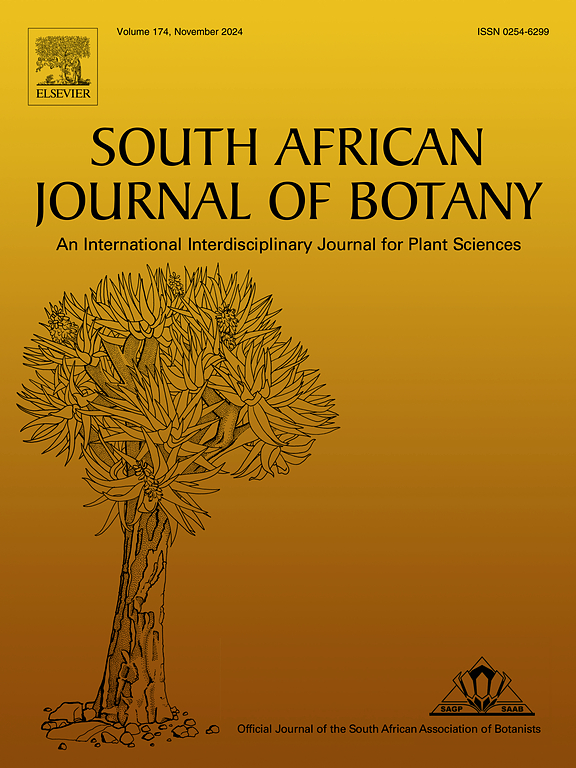生产和销售的葡萄酒,从棕榈树Hyphaene petersiana Klotzsch ex mart。(槟榔科)在Banhine国家公园,莫桑比克
IF 2.7
3区 生物学
Q2 PLANT SCIENCES
引用次数: 0
摘要
Banhine国家公园(BNP)是一个完全受保护的地区,居住着来自内陆和邻近地区的12376人,其中有2478个家庭,他们依靠自给农业和棕榈酒提取为生。由于农业收入低,家庭依靠收集非木材林产品(PFNMs)来维持生计。他们用Hyphaene petersiana棕榈树生产一种传统的葡萄酒,并以当地的名字命名为utchema。在本研究中,我们考察了当地葡萄酒的生产和销售。通过半结构化访谈收集了93个家庭的数据,其中81个是采集者,12个是零售商。访谈基于定性-定量方法和直接观察的混合方法,借助带有开放和封闭问题的标准表格,关于社会人口数据和棕榈树的使用。汁液是从较大的茎中收集的;每根茎滴进一个瓶子里,每天收集两到三次,持续一到两个月,具体取决于每棵棕榈树,直到它停止涌出。棕榈酒销售的平均年净利润为每个初级探索者354±21美元,每个零售商23±34美元。商品化指数(CI)和依赖程度受居住村庄和受教育年限的影响。棕榈树在当地家庭的生存中起着重要作用,迄今为止,棕榈树的使用被认为是可持续的。因此,建议将其纳入部门政策和保护计划,以保证社会经济和环境的可持续性,并为实现可持续发展目标做出贡献。本文章由计算机程序翻译,如有差异,请以英文原文为准。
Production and marketing of wine from the palm tree Hyphaene petersiana Klotzsch ex mart. (Arecaceae) in Banhine National Park, Mozambique
The Banhine National Park (BNP) is a fully protected area, inhabited by 12,376 people from the interior and adjacent areas, in a universe of 2478 families, who depend on subsistence farming and palm wine extraction. Due to low income from agriculture, families resort to collecting Non-Timber Forest Products (PFNMs) for their survival. From the Hyphaene petersiana palm tree, they produce a traditional wine with the local name, utchema. In this study, we examined the local production and marketing of wine. Data were collected from 93 households, of which 81 are tappers and 12 retailers, through semi-structured interviews. The interviews were based on a mixed approach of qualitative-quantitative methods and direct observation, with the aid of standard forms with open and closed questions, about socio-demographic data and uses of the palm tree. The sap is collected from larger stems; each stem drips into a bottle and is collected two or three times a day for a period of one to two months, depending on each palm tree, until it stops gushing. The average annual net profit from palm wine sales was USD354 ± 21 per primary explorer and USD23 ± 34 per retailer. The Commercialization Index (CI) and the Dependency Level were influenced by the village of residence and years of schooling. The palm tree plays a fundamental role in the subsistence of local families and its use to date is considered sustainable. Therefore, inclusion in sectoral policies and conservation programs is suggested, in order to guarantee socioeconomic and environmental sustainability and contribute to achieving the goals of the Sustainable Development Goals.
求助全文
通过发布文献求助,成功后即可免费获取论文全文。
去求助
来源期刊

South African Journal of Botany
生物-植物科学
CiteScore
5.20
自引率
9.70%
发文量
709
审稿时长
61 days
期刊介绍:
The South African Journal of Botany publishes original papers that deal with the classification, biodiversity, morphology, physiology, molecular biology, ecology, biotechnology, ethnobotany and other botanically related aspects of species that are of importance to southern Africa. Manuscripts dealing with significant new findings on other species of the world and general botanical principles will also be considered and are encouraged.
 求助内容:
求助内容: 应助结果提醒方式:
应助结果提醒方式:


